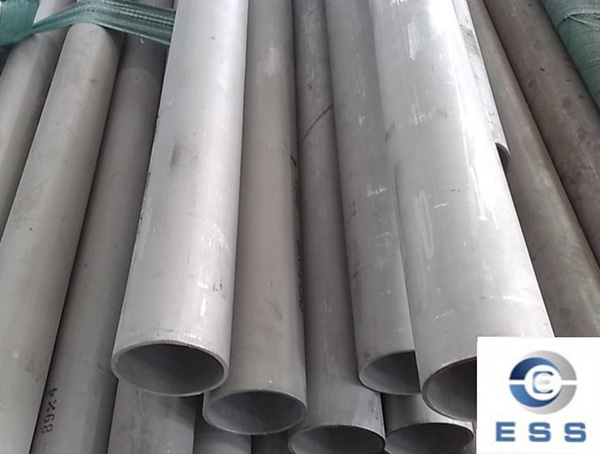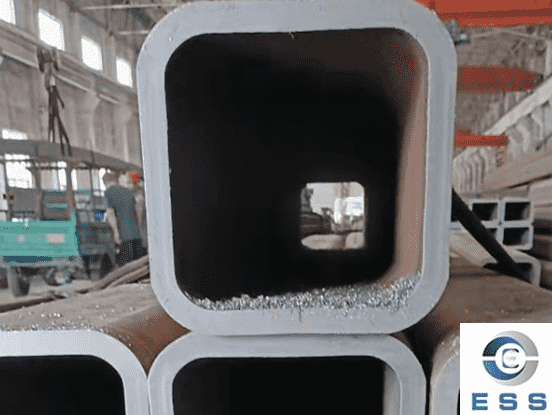According to different production processes, seamless steel pipes can be divided into hot-rolled seamless steel pipes, thermally expanded seamless steel pipes, and cold-drawn seamless steel pipes. There are four categories of cold-rolled seamless steel pipes.
Hot-rolled seamless steel pipes are pierced into tube blanks using a piercing machine, and then shaped to the specified outer diameter through a hot rolling mill to form round steel for hot-rolled seamless steel pipes. Steel Pipe. The process is simple and the price is relatively low, but the dimensional accuracy is not high.

Thermal expansion seamless steel pipes are formed by firing seamless steel pipe blanks or finished seamless steel pipes in an electric furnace with an alloy core at temperatures above 1050 degrees to expand the interior to a certain outer diameter. After the diameter is expanded into a thermally expanded seamless steel pipe, the wall thickness is thinner than the raw material, the length is shortened, and the outer diameter is larger.
Cold drawn seamless steel pipe (ASTM A53) is a seamless steel pipe formed by drawing seamless steel pipe blanks or finished seamless steel pipes through the die of a cold drawing machine. It coincides with the thermal expansion process. The finished drawn tube is longer than the raw material, has thinner wall thickness, and has a smaller outer diameter. The drawing process does not require heating and can be formed at room temperature or re-annealed. Sometimes annealing is not required.
The cold rolling process is also produced at room temperature like the cold drawing process, but the cold rolling mill is different from the cold drawing machine. The cold drawing machine is formed by the mold, and the cold rolling mill is gradually formed by the mold, so the cold rolling process production is slower than the cold drawing process production.
Seamless steel pipe inspection specifications
There are many things that need to be tested for seamless steel pipes, especially after leaving the factory, all links and models of seamless steel pipes need to be continuously tested. What aspects of testing should be carried out for ordinary seamless steel pipes?
Causes of corrosion of hot-rolled seamless pipes
Hot-rolled seamless pipes form an ultra-thin, strong, delicate and stable chromium-rich oxide film (protective film) on its surface to prevent oxygen atoms from rewetting and reoxidizing, thereby obtaining professional anti-corrosion capabilities. Once the plastic film is continuously damaged due to various reasons, oxygen atoms in the steam or liquid will continue to penetrate or iron atoms in the metal composite material will continue to precipitate, producing loose chemicals, and the metal surface material will continue to rust. So do you know the causes of corrosion of hot-rolled seamless pipes?
Analysis of corrosion causes of hot-rolled seamless pipes
Dust containing other chemical molecules or organometallic composite particle attachments is deposited on the surface of hot-rolled seamless pipes. In humid air, condensation between the accessories and the stainless steel plate combines them into micro rechargeable batteries, causing an electrochemical reaction and destroying the protective film. This is the principle of the so-called primary battery.
Organic juices (such as melons, vegetables, fried noodles, shepherd's purse, etc.) adhere to the surface of hot-rolled seamless steel pipes and form sodium citrate in the presence of ice oxygen. In the long term, sodium citrate will corrode the surface of metal materials.
Acids, alkali, and phosphate compounds adhere to the surface of hot-rolled seamless pipes (such as edible soda ash and lime powder splashed on the walls of the room), causing local corrosion.
In polluted air (such as gas containing a large amount of potassium thiocyanate, carbon oxides, and sulfur oxides), condensed water will produce sulfuric acid spots, which will cause chemical corrosion of seamless pipes.
Seamless pipe hardness test
1. Seamless steel pipe wall thickness inspection: micrometer, ultrasonic thickness gauge, no less than 8 points at both ends and recorded.
2. Check the outer diameter and ovality of the seamless steel pipe: caliper, vernier caliper, ring gauge, and measure the maximum and minimum points.
3. Seamless steel pipe length inspection: steel tape measure, manual and automatic length measurement.
4. Seamless steel pipe curvature inspection: ruler, level (1m), feeler gauge, and filament to measure curvature per meter and full length curvature.
5. Inspection of end bevels and blunt edges of seamless steel pipes: square heads and pallets.
Seamless steel pipe surface quality inspection
1. Manual visual inspection: lighting conditions, standards, experience, signs, seamless steel pipe rotation.
2.Non-destructive testing: ultrasonic testing UT, eddy current testing ET, magnetic particle MT and magnetic flux leakage testing, electromagnetic ultrasonic testing, penetrant testing.
Read more: Difference between seamless pipe and seam pipe













 Eastern Steel Manufacturing Co.,Ltd not only improve product production and sales services, but also provide additional value-added services. As long as you need, we can complete your specific needs together.
Eastern Steel Manufacturing Co.,Ltd not only improve product production and sales services, but also provide additional value-added services. As long as you need, we can complete your specific needs together.










